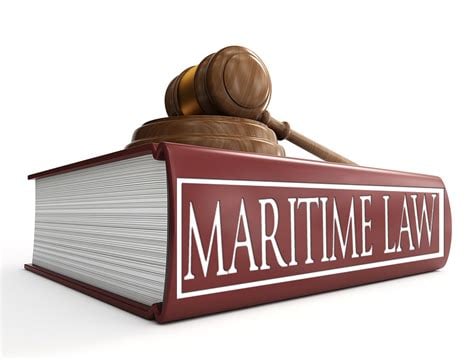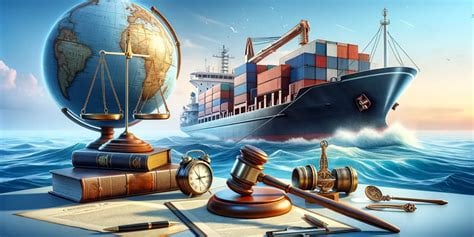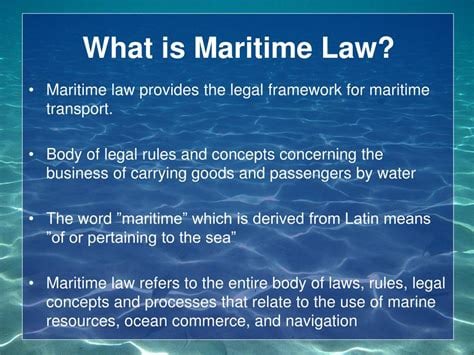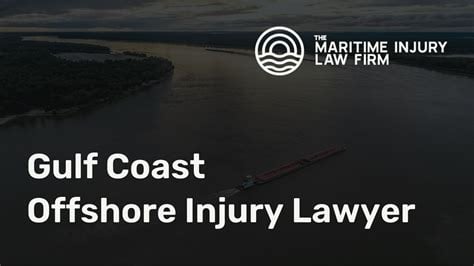
- Understanding the Bill of Lading in Maritime Law: A Comprehensive Guide
- Introduction
- Functions of a Bill of Lading
- Clauses and Terms in a Bill of Lading
- Types of Bills of Lading
- Bill of Lading Table Breakdown
- Conclusion
-
FAQ about Bill of Lading in Maritime Law
- What is a bill of lading?
- What are the main functions of a bill of lading?
- Who issues a bill of lading?
- What are the different types of bills of lading?
- What is the difference between a clean and a foul bill of lading?
- What happens if the goods are damaged during transit?
- What is the limitation period for filing a claim?
- What is the Hague-Visby Rules?
- What is the Hamburg Rules?
Understanding the Bill of Lading in Maritime Law: A Comprehensive Guide

Introduction
Hey there, readers! Welcome to our in-depth guide on the bill of lading in maritime law. This vital document plays a crucial role in international trade and the safe transportation of goods across oceans. So, let’s dive into its significance and implications.
The bill of lading is a legal document that serves as a receipt for goods shipped on a vessel. It provides evidence of the contract between the shipper and the carrier, outlining the terms and conditions of transportation. By issuing this document, the carrier acknowledges that the goods have been received in good order and are ready for shipment.
Functions of a Bill of Lading
A bill of lading serves multiple essential functions in maritime law:
Proof of Shipment
This document acts as a legal record that the carrier has taken possession of the goods specified in the document. It provides evidence of the date and location where the goods were received.
Contractual Agreement
The bill of lading embodies the contract between the shipper, the carrier, and sometimes the consignee. It outlines the responsibilities and rights of each party, including the agreed-upon freight rates, terms of payment, and delivery arrangements.
Title Document
In some cases, the bill of lading serves as a title document, allowing the holder to claim ownership of the goods. This is particularly important in letter of credit transactions, where the bill of lading is essential for the transfer of payment.
Receipt for Payment
The bill of lading can act as a receipt for payment of freight charges. It indicates that the carrier has received payment from the shipper or consignee, as agreed upon in the contract.
Clauses and Terms in a Bill of Lading
The bill of lading typically includes various clauses and terms that define the legal framework governing the shipment:
Charter Party
This clause incorporates the terms of the charter party, if applicable. The charter party is the main contract between the shipowner and the charterer, and it governs the vessel’s operation and the carriage of goods.
Laytime and Demurrage
These clauses specify the time allowed for loading and unloading the goods, as well as any penalties or charges for delays beyond the agreed-upon time.
Freight Payment
This clause outlines the amount of freight to be paid, the currency, and the terms of payment, such as prepaid or collect.
Liability Limitations
This clause sets limits on the carrier’s liability for loss or damage to the goods during transit. The limits may vary depending on the type of goods and the carrier’s terms and conditions.
Types of Bills of Lading
There are several different types of bills of lading used in maritime law:
Straight Bill of Lading
This is a non-negotiable document that evidences the receipt of goods and is used when the goods are to be delivered to a specific consignee.
Negotiable Bill of Lading
This is a document of title that can be transferred or assigned to a third party. The holder of the negotiable bill of lading has the right to claim the goods.
Clean Bill of Lading
A clean bill of lading indicates that the goods were received in good order and condition, without any apparent damage or defects.
Claused Bill of Lading
This document is issued when the goods are received with some damage or inconsistencies. The clause details the nature of the damage, allowing the consignee to make claims against the carrier.
Bill of Lading Table Breakdown
| Feature | Straight Bill of Lading | Negotiable Bill of Lading |
|---|---|---|
| Negotiability | Non-negotiable | Negotiable |
| Transfer of Title | No transfer of title | Transfer of title possible |
| Endorsement | Not required | Required to transfer title |
| Risk of Loss | Consignor bears the risk | Consignee bears the risk |
| Use | Domestic shipments | International trade |
Conclusion
Readers, we hope this comprehensive guide has provided you with a clear understanding of the bill of lading in maritime law. It is a vital document that facilitates international trade and governs the transportation of goods across vast oceans. To learn more about related topics, be sure to check out our other articles on ship charters, cargo insurance, and maritime arbitration.
FAQ about Bill of Lading in Maritime Law
What is a bill of lading?
A bill of lading is a legal document issued by a carrier to a shipper, acknowledging receipt of goods for shipment. It also serves as a contract for the carriage of goods.
What are the main functions of a bill of lading?
- Provides evidence of the contract between the carrier and the shipper.
- Specifies the terms and conditions of carriage.
- Lists the goods being shipped, their quantity, and their condition.
- Acknowledges receipt of the goods by the carrier.
- Provides instructions for the delivery of the goods.
Who issues a bill of lading?
The carrier (e.g., shipping company, airline) issues the bill of lading to the shipper.
What are the different types of bills of lading?
- Straight bill of lading: Non-negotiable document indicating that the goods are to be delivered to a specific consignee without their endorsement.
- Negotiable bill of lading: Allows the consignee to transfer title to the goods by endorsing the document.
What is the difference between a clean and a foul bill of lading?
- Clean bill of lading: Indicates that the goods were received in apparent good condition.
- Foul bill of lading: Indicates that the goods were received with damage or other issues.
What happens if the goods are damaged during transit?
The shipper may file a claim with the carrier under the terms of the bill of lading.
What is the limitation period for filing a claim?
The limitation period varies depending on the jurisdiction and the type of bill of lading. It is typically one year or less.
What is the Hague-Visby Rules?
An international convention that sets out the rules and responsibilities for the carriage of goods by sea.
What is the Hamburg Rules?
A more recent convention that aims to update the Hague-Visby Rules. It has not been widely adopted.




